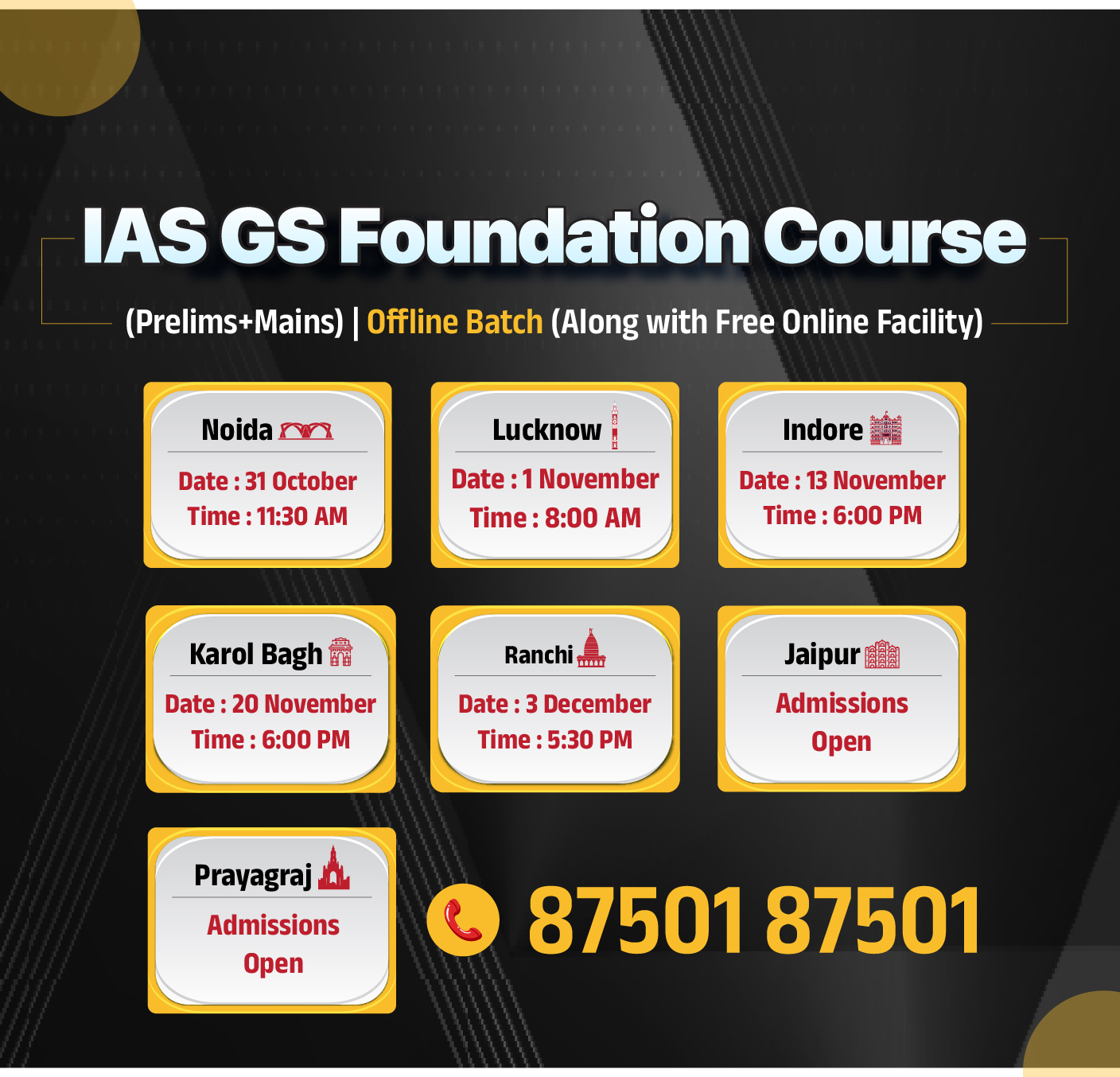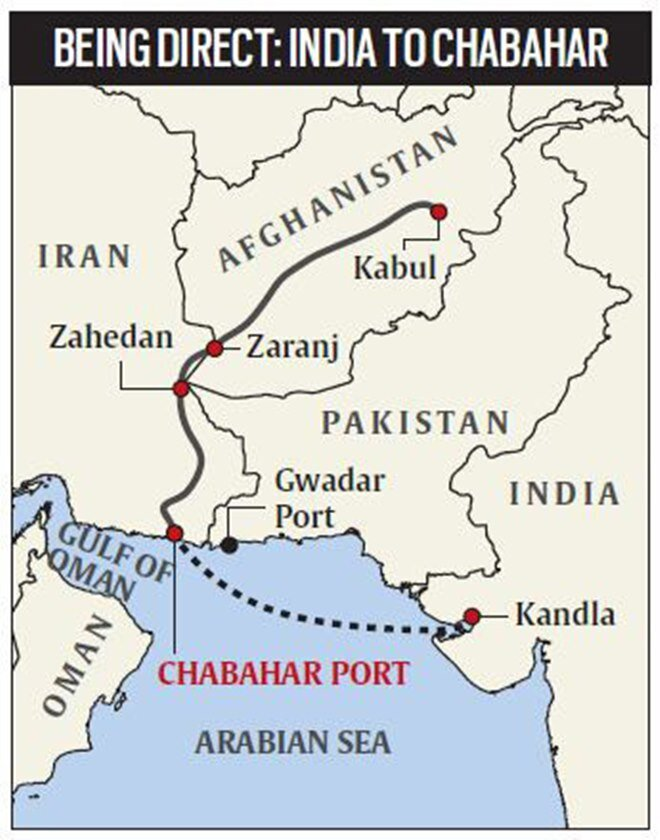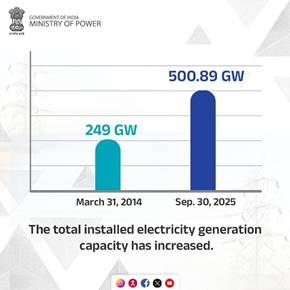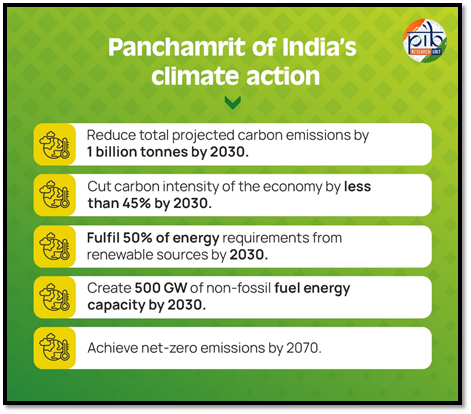Indian Economy
Boosting Textile Competitiveness
For Prelims: Textile Sector, MSME, Make in India, Skill India, Free Trade Agreements (FTAs), Production Linked Incentive (PLI) Scheme for Textiles, PM MITRA (Mega Integrated Textile Region and Apparel) Parks, Amended Technology Upgradation Fund Scheme (ATUFS), Samarth (Scheme for Capacity Building in Textile Sector), National Technical Textiles Mission (NTTM), Circular Economy.
For Mains: Status, global competitiveness challenges, and strategic reforms needed for India's textile industry to achieve its USD 100 billion export potential and align with national economic goals.
Why in News?
The Government is formulating a comprehensive cost roadmap for the textile sector to align it with global benchmarks amid rising competition from Bangladesh, Vietnam, and China.
What is the Status of India’s Textile Industry?
- Economic Contribution: It serves as a key pillar of India’s manufacturing and export economy, contributing 2.3% to the GDP, 13% to industrial production, and 12% to total exports.
- Export Performance: India exported USD 34.4 billion worth of textiles in 2023–24. Apparel forms the largest share (42%), followed by raw/semi-finished materials (34%) and non-apparel finished goods (30%).
- Employment Generation: It is the 2nd-largest employment generator after agriculture. It provides direct employment to over 45 million people, including a large number of women and rural workers.
- Global Standing: India ranks 5th globally (2024) in the textile market. The domestic market size is expected to rise from USD 174 billion to USD 350 billion by 2030.
- Production Capacity: Produces about 22,000 million garments annually, indicating large-scale production capabilities and export potential.
- Around 80% of production capacity lies within MSME clusters, showcasing its inclusive and decentralized nature.
What Factors are Hindering the Global Competitiveness of India's Textile Industry?
- High Input Costs: Quality Control Orders (QCOs) restricting polyester and viscose imports have made domestic yarn producers depend on costlier local polyester fibre, which is 33–36% more expensive than in China.
- Lower Labour Productivity: Competitors like Bangladesh and Vietnam boast 20–40% higher labour productivity, making their manufacturing more efficient.
- Regulatory and Trade Hurdles: Stringent labour laws and the absence of key Free Trade Agreements (FTAs), particularly with the European Union (EU), deny India the duty-free access that its competitors enjoy.
- Competitive Advantages of Rivals: Bangladesh benefits from lower wages and preferential trade terms. Vietnam has superior FTAs, including duty-free access to China, and more flexible labour regulations.
- Technological Gaps: MSMEs, forming 80% of the industry, face limited capital for modernization, as outdated machinery and lack of affordable funding hinder productivity and quality.
- MSME Dwarfism keeps the textile industry trapped in low-productivity cycles, reducing its ability to compete globally, generate employment, and scale innovation.
- Workforce & Compliance: A shortage of skilled workers in modern manufacturing (e.g., Technical Textiles), design, and marketing, along with environmental laws, increases the compliance burden on small units.
What Reforms are Required to Boost the Global Competitiveness of India's Textile Industry?
Government Roadmap
- Three-Phased Roadmap: A short-term (2-year), medium-term (5-year), and long-term plan will be developed to map and benchmark costs.
- Focus on Cost Reduction: The plan will target lowering expenses in raw materials, compliance, and taxation, and reducing manufacturing wastage
- Boosting Innovation: A dedicated committee will work on:
- Strengthening R&D in technical textiles and sustainable materials.
- Integrating innovation into branding and design.
- Encouraging start-ups and design houses.
- Long-Term Vision: Achieving USD 100 billion in textile exports by 2030. Establishing global innovation centres and design houses for new-age textiles.
Strategic Reforms Needed
- Enhancing Cost Competitiveness: Modernize ports, simplify documentation, and ensure affordable, reliable energy for textile units through industrial corridors or subsidies. Rationalize import duties on cotton, man-made fibres.
- Trade and Regulatory Reforms: Prioritize key FTAs like with the EU, introduce flexible labour laws for seasonal scaling, streamline PLI Scheme processes, and maintain a stable GST regime for the textile sector.
- The 4 Labour Codes—Code on Wages (2019), Industrial Relations Code (2020), Social Security Code (2020), and Occupational Safety, Health and Working Conditions Code (2020)—should be further streamlined to meet the textile sector’s specific needs.
- Boosting Productivity and Innovation: Invest in skill development to bridge the 20–40% productivity gap, promote R&D in technical and sustainable textiles, and enable MSME credit access for Industry 4.0 upgrades like automation and AI.
- The Economic Survey FY25 stated that textile industry costs are expected to increase in the coming years due to a global shift toward sustainable sourcing.
- Focus on Sustainability and Branding: Support sustainable sourcing through green energy, water recycling, and circular economy models. Promote innovation-driven branding and build strong “India Handloom” and “India Craft” identities for global markets.
Conclusion
A comprehensive cost roadmap—covering short, medium and long terms—can revitalize India’s textile sector by lowering input and compliance costs, boosting productivity, fostering R&D and sustainability, and securing FTAs. Coordinated reforms across infrastructure, trade, labour, finance and innovation are essential for achieving the $100 billion export and competitiveness goals by 2030.
|
Drishti Mains Question: Q. "India's textile sector, despite its significant economic contribution, faces a crisis of competitiveness." Analyse the structural bottlenecks responsible for this and suggest strategic reforms needed. |
Frequently Asked Questions (FAQs)
1. What is India’s global rank in the textile market?
India ranks 5th globally in the textile market. India exported USD 34.4 billion worth of textiles in 2023–24.
2. What share of India’s industrial production is from textiles?
The textile industry accounts for 13% of India’s industrial production. The textile sector contributes 2.3% to India’s GDP.
3. What is the projected size of India’s domestic textile market by 2030?
It is expected to grow to USD 350 billion by 2030.
PM MITRA Scheme: Mega Textile Parks - IN FOCUS | UPSC Current affairs | Drishti IAS English
UPSC Civil Services Examination, Previous Year Question (PYQ)
Prelims
Q. Consider the following statements: (2020)
- The value of Indo-Sri Lanka trade has consistently increased in the last decade.
- “Textile and textile articles” constitute an important item of trade between India and Bangladesh.
- In the last five years, Nepal has been the largest trading partner of India in South Asia.
Which of the statements given above is/are correct?
(a) 1 and 2 only
(b) 2 only
(c) 3 only
(d) 1, 2 and 3
Ans: (b)
Mains
Q. Analyse the factors for highly decentralized cotton textile industry in India. (2013)


Facts for UPSC Mains
SC Upholds Minors' Property Right
Why in News?
In K.S. Shivappa vs Smt. K. Neelamma Case 2025, the Supreme Court (SC) ruled that after attaining majority, a person can repudiate a property sale made by their guardian without court sanction, either by filing a suit or through clear conduct, such as reselling the property.
What does the Law Say about Selling a Minor's Property?
- Background of the Case: The father, acting as the natural guardian, sold plots bought in the names of his minor sons without obtaining district court approval as required by law.
- After attaining majority, the sons resold the properties, resulting in legal disputes between the original buyers and the subsequent purchasers.
- Legal Framework: The laws on property acquired by minors through their guardians are determined through 3 pieces of legislation:
- Indian Contract Act, 1872: Only persons of majority age and sound mind are competent to contract. Contracts by minors are void ab initio—invalid from the beginning.
- A valid contract requires consent, a lawful object, legal consideration, and competent parties—the last being crucial when a minor is represented by a guardian.
- Hindu Minority and Guardianship Act, 1956: Natural guardians must act for the minor’s benefit. Guardians cannot sell, mortgage, or lease a minor’s immovable property without court permission.
- Any sale without permission is voidable at the instance of the minor.
- Guardian and Wards Act, 1890: A guardian cannot dispose of a ward’s property without the court’s sanction.
- Limitation Act, 1963: It grants a person 3 years after attaining majority to challenge or set aside such a property transfer.
- Indian Contract Act, 1872: Only persons of majority age and sound mind are competent to contract. Contracts by minors are void ab initio—invalid from the beginning.
- Current SC Ruling:
- Two Modes of Repudiation: The Court held that a person can reject a voidable transaction either by instituting a suit for setting it aside or by repudiating it through unequivocal conduct.
- Conduct as a Valid Tool: The act of reselling the property to a new buyer after attaining majority, within the three-year limitation period, constitutes a valid repudiation of the original, unauthorised sale.
- Power of Attorney: If the plaintiff refuses to testify, their proxy cannot replace their personal testimony on key matters known only to the plaintiff. Hence, a Power-of-Attorney holder cannot testify in place of the principal.
- Significance: The ruling strengthens minor protection under Indian property law, reaffirming the precedent set in Abdul Rahman v. Sukhdayal Singh Case, 1905 and specifying a three-year limitation period for such repudiation under the Limitation Act, 1963.
Conclusion
The Supreme Court's judgment significantly strengthens property rights of minors. By validating repudiation through conduct, it simplifies the process for adults to reclaim property sold without authorization, ensuring the guardian's fiduciary duty is upheld and reducing the burden of formal litigation on the aggrieved party.
|
Drishti Mains Question: Q. Discuss how the K.S. Shivappa v. K. Neelamma (2025) judgment strengthens protection of a minor’s property rights and its implications for guardianship law |
FAQs
1. What is the legal status of a contract entered into by a minor?
Contracts by minors are void ab initio (invalid from the outset) as per the Indian Contract Act, 1872.
2. What is the time limit for a person to challenge a property transfer made by their guardian?
The Limitation Act, 1963, provides a 3-year period from the date of attaining majority to challenge such a transfer.
3. Which precedent did the Supreme Court reaffirm with this judgment?
The Court reaffirmed the principle established in the 1905 case of Abdul Rahman v. Sukhdayal Singh, which recognized repudiation by conduct
UPSC Civil Services Examination, Previous Year Questions (PYQs)
Prelims
Q. What is the position of the Right to Property in India? (2021)
(a) Legal right available to citizens only
(b) Legal right available to any person
(c) Fundamental Right available to citizens only
(d) Neither Fundamental Right nor legal right
Ans: (b)
Q. ‘Economic Justice’ as one of the objectives of the Indian Constitution has been provided in (2013)
(a) the Preamble and the Fundamental Rights
(b) the Preamble and the Directive Principles of State Policy
(c) the Fundamental Rights and the Directive Principles of State Policy
(d) None of the above
Ans: (b)
Mains
Q. What was held in the Coelho case? In this context, can you say that judicial review is of key importance amongst the basic features of the Constitution? (2016)
Q. Discuss the role of land reforms in agriculture development. Identify the factors that were responsible for the success of land reforms in India. (2016)
Q. The Right to Fair Compensation and Transparency in Land Acquisition, Rehabilitation and Resettlement Act, 2013 has come into effect from 1st January, 2014. What are the key issues which would get addressed with the Act in place? What implications would it have on industrialization and agriculture in India? (2014)

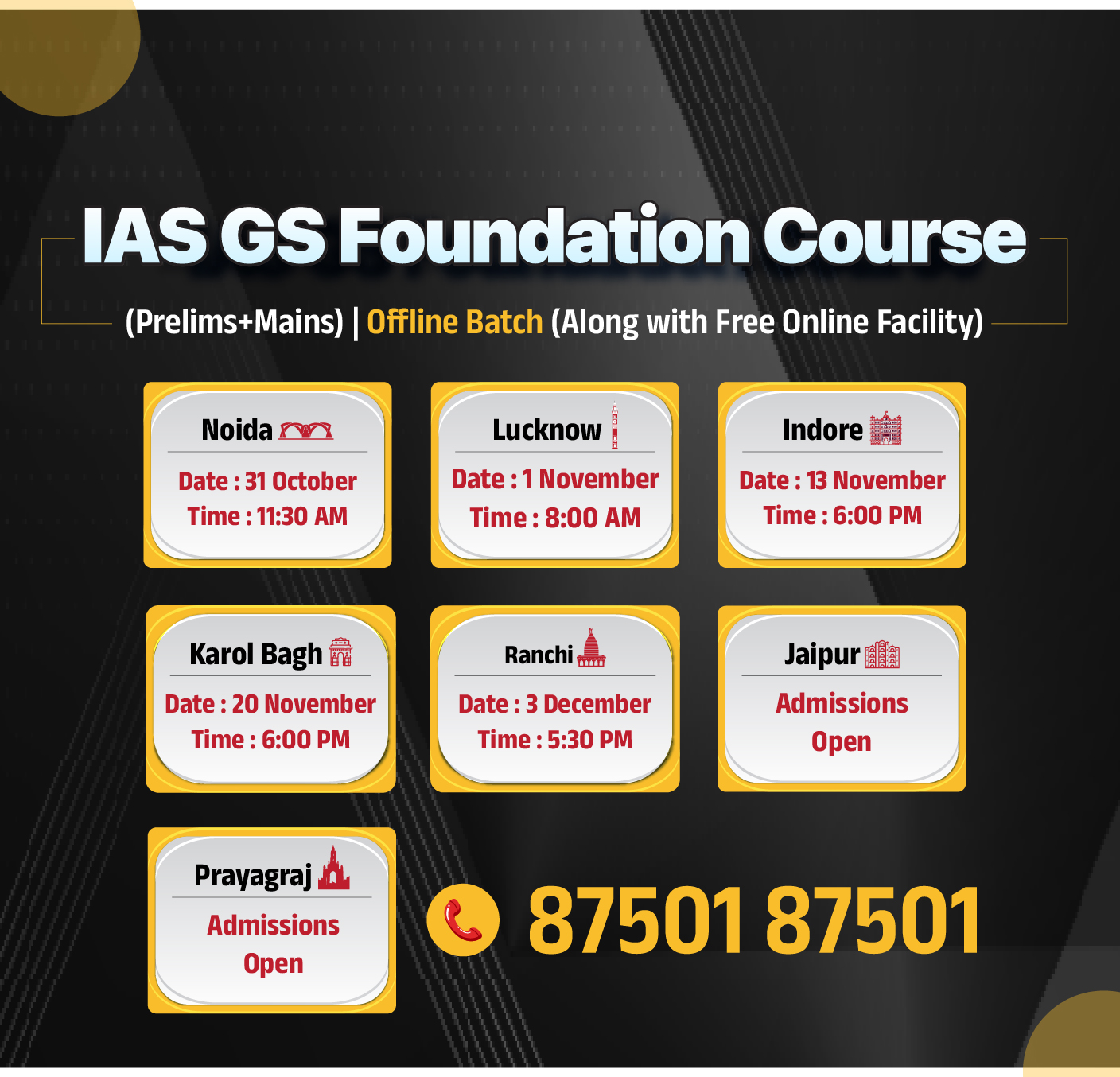
Important Facts For Prelims
150 Years of Arya Samaj
Why in News?
The Prime Minister addressed the International Arya Mahasammelan 2025 in New Delhi, marking the 150th foundation year of the Arya Samaj and the 200th birth anniversary of Maharshi Dayanand Saraswati.
- Part of the Jyāna Jyoti Festival, the event honours Dayanand’s reformist legacy, showcases “150 Golden Years of Service,” and promotes Vedic and Swadeshi values aligned with Viksit Bharat 2047.
What is Arya Samaj?
- About: The Arya Samaj is a Hindu reform movement that upholds the Vedas as the supreme source of knowledge and truth. It was founded by Swami Dayanand Saraswati in 1875 in Bombay (now Mumbai).
- Philosophical Principles: It upholds Vedic teachings while rejecting idol worship, elaborate rituals, animal sacrifices, social evils, and superstitions.
- It emphasizes the principles of karma (law of action), samsara (cycle of rebirth), and cow sanctity, while promoting Vedic fire rituals (havan/yajna) and samskaras (sacraments).
- Social Reforms: It advocated women’s education, inter-caste marriages, and widow remarriage, while establishing schools, orphanages, and homes for widows.
- It also contributed to famine relief, medical aid, and led the Shuddhi Movement to reconvert those who had embraced other faiths.
- Other Arya Samaj Leaders: Arya Samaj was shaped by key figures like Swami Virajanand Dandeesha, who inspired Dayanand through Vedic scholarship; Shri Shraddhanand, founder of Gurukul Kangri University and a reformist martyr; and Pandit Lekh Ram, a staunch defender of Vedic teachings and opponent of religious orthodoxy.
- Arya Samaj Split: In 1893, the Arya Samaj divided over two key issues — meat-eating versus vegetarianism and Anglicized versus Sanskrit-based education.
- Under Lala Hansraj’s leadership, the Gurukul system promoted traditional Vedic education blended with modern learning, while Lala Lajpat Rai and others supported modern, English-based education through Dayanand Anglo-Vedic (DAV) institutions.
Who was Maharishi Dayanand Saraswati?
- About: Maharshi Dayanand Saraswati was a renowned religious reformer, philosopher, and social thinker of the 19th century who spearheaded a movement to revive the purity of Vedic teachings and eradicate social evils from Hindu society.
- Formative Period: Born as Mool Shankar Tiwari on 12th February 1824 in Gujarat to devout Brahmin parents, he showed an early interest in spiritual inquiry, questioning idol worship, rituals, and superstitions.
- At the age of 19, he renounced worldly life to seek spiritual truth, living as an ascetic for nearly 15 years (1845–1860), and under Swami Virjanand’s guidance in Mathura, was inspired to reform Hinduism and revive its Vedic roots.
- Reformist Vision: He opposed idol worship, untouchability, caste discrimination, polygamy, child marriage, and gender inequality, advocating a classless, merit-based society.
- He promoted women’s education, widow remarriage, upliftment of depressed classes, the Shuddhi movement, and the abolition of Sati and child marriage, emphasizing the motto “Back to the Vedas” for rationality, equality, and justice.
- His ideas, compiled in Satyarth Prakash (The Light of Truth), condemned social evils like infanticide and dowry while promoting Vedic wisdom.
- Academic Contributions: He inspired the founding of gurukulas, Girl’s Gurukulas, and Dayanand Anglo-Vedic (DAV) institutions in 1886, with the first DAV school established in Lahore under Mahatma Hansraj.
- He advocated modern, scientific, and Vedic education while opposing the British colonial system.
- Support for Nationalist Causes: He was the first to call for "Swaraj" in 1876, inspiring leaders like Bal Gangadhar Tilak, Lala Lajpat Rai, and Mahatma Gandhi.
- He also championed Swadeshi (economic self-reliance), cow protection, and Hindi as the national language.
- Lasting Legacy: Swami Dayanand Saraswati faced orthodox opposition to his reform efforts, yet left a lasting legacy through the Arya Samaj and DAV institutions, which continue to benefit society.
Frequently Asked Questions (FAQs)
1. Who was Maharshi Dayanand Saraswati?Maharshi Dayanand Saraswati (1824–1883) was a Hindu reformer, philosopher, and founder of the Arya Samaj (1875). He advocated rationalism, equality, women’s education, and social reform, while inspiring India’s early nationalist and Swadeshi movements.
2. What was the core philosophical motto of the Arya Samaj?
The core motto was "Back to the Vedas," emphasizing a return to the original, rational, and egalitarian principles of the Vedic scriptures as the ultimate source of truth.
3. What is the significance of the Shuddhi Movement led by Arya Samaj?
The Shuddhi Movement was significant for its aim to religiously reconvert individuals who had embraced other faiths, thereby attempting to reform and consolidate Hindu society.
UPSC Civil Services Examination, Previous Year Questions (PYQs)
Q. Which among the following events happened earliest? (2018)
(a) Swami Dayanand established Arya Samaj.
(b) Dinabandhu Mitra wrote Neel Darpan.
(c) Bankim Chandra Chattopadhyay wrote Anandmath.
(d) Satyendranath Tagore became the first Indian to succeed in the Indian Civil Services Examination.
Ans: (b)

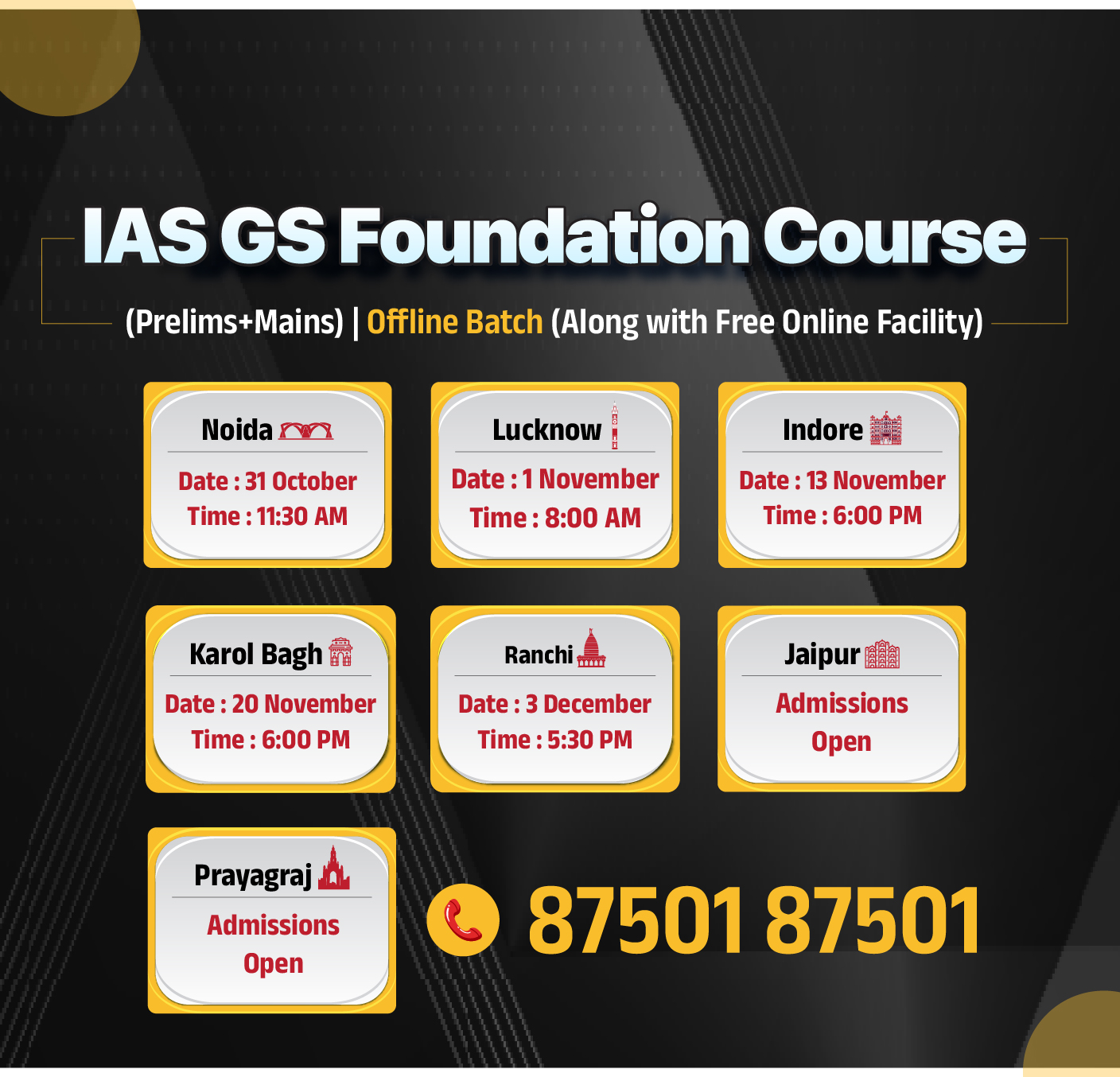
Important Facts For Prelims
India Secures Six-Month US Waiver for Chabahar Port
Why in News?
India has received a six-month waiver from US sanctions on Iran’s Chabahar Port, allowing continued Indian operations there until at least April 2026.
What are the Key Facts About the Chabahar Port?
- Location and Geography: Chabahar Port is situated in Iran’s Sistan-Baluchestan province on the Gulf of Oman, near the mouth of the Strait of Hormuz.
- The Chabahar Port project comprises two ports - Shahid Kalantari and Shahid Beheshti.
- It is Iran’s only oceanic and deep water port, giving direct access to the Indian Ocean.
- The Chabahar port is located about 170 km west of Pakistan’s Gwadar Port, which is being developed by China under the China–Pakistan Economic Corridor (CPEC).
- Strategic and Economic Importance for India: Chabahar Port provides direct access to Afghanistan and Central Asia, bypassing Pakistan.
- It forms part of the International North–South Transport Corridor (INSTC) linking India with Iran–Caspian Sea–Russia–Europe and strengthens India’s maritime connectivity and energy security in the Indian Ocean Region.
- Chabahar port acts as a counterbalance to China’s Belt and Road Initiative (BRI) and Pakistan’s Gwadar Port under China Pakistan Economic Corridor (CPEC).
- It serves as a linchpin of India’s “Connect Central Asia” and “Extended Neighbourhood” policies.
- India–Iran Cooperation: India entered into an agreement in 2005 with Iran to develop the port.
- India and Iran signed an MoU in 2015 to develop the Shahid Beheshti Terminal at Chabahar, which India formally took over in 2018 through India Ports Global Ltd. (IPGL).
- In 2016, a Trilateral Agreement was signed between India, Iran, and Afghanistan to establish an international transport and transit corridor through Chabahar.
- US Sanctions and Waivers: In 2018, the US granted India a waiver for Chabahar, recognising its role in supporting Afghanistan’s development. Later, the waiver was revoked in September 2025 making any entity linked with Chabahar liable to penalties under the Iran Freedom and Counter-Proliferation Act, 2012.
- The six-month US sanctions waiver (October 2025–April 2026) allows uninterrupted Indian operations at the port.
- Current Status and Developments (as of 2025): The Taliban regime in Afghanistan has expressed interest in using Chabahar for trade, recognising its economic importance.
- Efforts are ongoing to integrate Chabahar with INSTC and the proposed Chabahar–Zahedan–Mashhad rail link (with Iranian Railways).
- The port continues to serve as a strategic node for India’s westward outreach despite geopolitical shifts.
Frequently Asked Questions (FAQs)
1. Where is the Chabahar Port located?
It is situated in Iran’s Sistan–Baluchestan province on the Gulf of Oman, near the Strait of Hormuz.
2. What are the two main ports at Chabahar Port?
Shahid Beheshti and Shahid Kalantari are the two principal terminals; India was offered development of Shahid Beheshti and operates it through IPGL.
3. Which corridor links Chabahar Port with Russia and Europe?
The International North–South Transport Corridor (INSTC).
4. Why is Chabahar strategically important for India?
It provides a direct sea–land route to Afghanistan and Central Asia bypassing Pakistan, links to INSTC, and counters Chinese influence via China–Pakistan Economic Corridor (CPEC)
UPSC Civil Services Examination, Previous Year Question (PYQ)
Prelims
Q. What is the importance of developing Chabahar Port by India? (2017)
(a) India’s trade with African countries will enormously increase.
(b) India’s relations with oil-producing Arab countries will be strengthened.
(c) India will not depend on Pakistan for access to Afghanistan and Central Asia.
(d) Pakistan will facilitate and protect the installation of a gas pipeline between Iraq and India.
Ans: (c)


Rapid Fire
India Crosses 500 GW Power Capacity Mark
India has achieved a significant milestone with the nation’s total installed electricity capacity surpassing 500 GW. More than 51% of this capacity now originates from non-fossil fuel sources.
- Breakdown of India’s Power Capacity:
- Total Installed Capacity: 500.89 GW
- Non-fossil fuel sources: 256.09 GW (≈51%) including Solar(127.33 GW), Wind (53.12 GW), Hydro (30.29 GW) and Nuclear (45.25 GW).
- Fossil-fuel-based sources: 244.80 GW (≈49%)
- Renewables Hit Record High: India has emerged as a global renewable energy leader, ranking:
- 3rd in solar power capacity,
- 4th in wind power, and
- 4th in overall renewable energy capacity globally.
- Meeting National Targets Ahead of Time: With this progress, India has already achieved one of its major COP26 (Glasgow, 2021) Panchamrit goals — to have 50 % of installed electric power capacity from non-fossil fuel sources by 2030, five years early.
- Significance:
- This shows India’s rapid pace of renewable capacity expansion and gradual decline in fossil fuel dependency.
- It was the first time over half of India’s electricity came from green sources in a single day - a symbol of the nation’s growing energy resilience and sustainability.
- This underscores India’s leadership in climate action while maintaining grid stability and energy reliability.
- Flagship Programs Related to Renewable Energy:
| Read More: India’s Renewable Energy Revolution |


Rapid Fire
Kendriya Grihmantri Dakshata Padak 2025
The Ministry of Home Affairs (MHA) has honoured 1,466 personnel from various States, Union Territories, Central Armed Police Forces (CAPFs) and Central Police Organisations (CPOs) with the ‘Kendriya Grihmantri Dakshata Padak 2025’.
- Kendriya Grihmantri Dakshata Padak: Instituted by the Ministry of Home Affairs (MHA) in February 2024, it is announced annually on 31st October, marking the birth anniversary of Sardar Vallabhbhai Patel, India’s first Home Minister.
-
It honours excellence in Special Operations, Investigation, Intelligence, and Forensic Science, promoting professionalism, high ethical standards, and motivation among security and police personnel.
-
- Scope: Conferred on members of Police Forces, Security Organizations, Intelligence Wings, CAPFs, CPOs, and Forensic Science institutions across the country.
| Read more: Rashtriya Ekta Diwas 2025: Sardar Patel @150 - A Legacy of Unity |

